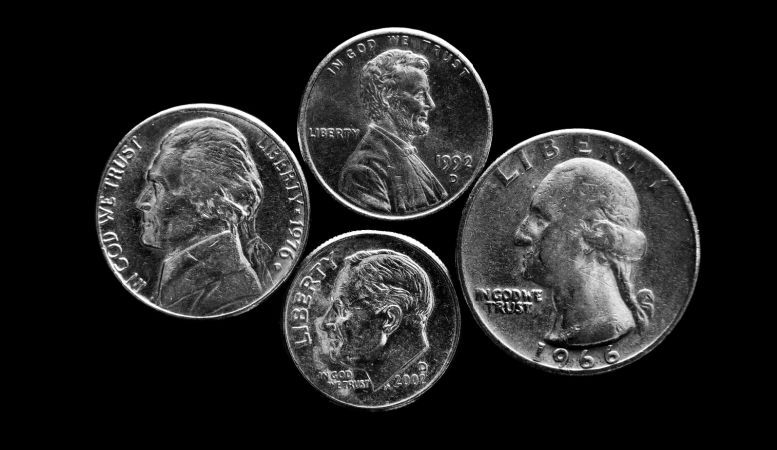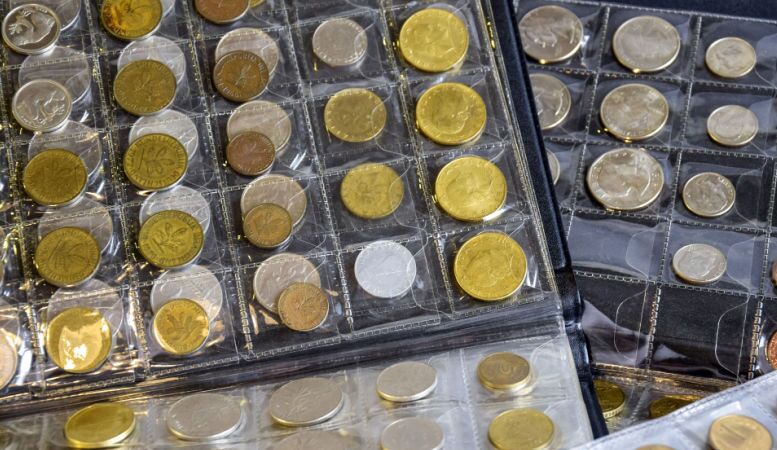Table of Contents
Greek and Roman artisans began minting coins around the third century with identifiable mint markers. This practice is now an integral part of global currency standards.
However, during the mid-1960s, the United States briefly stamped coins without mint marks, making them highly sought after by investors.
Experts from Oxford Gold Group explain everything you should know about these coins.
What Are No Mint Marks?
A mint mark is a stamped letter on a coin that shows its place of origin. You can find these marks on the edges of circulating coins in the United States.
Conversely, a coin with no mint mark is a piece of currency that does not have a letter identifying its place of production.
Despite many collectors assuming these products are rare, the Philadelphia Mint purposely produced millions of coins without a mint mark.
Still, many coins in circulation do not have a mint mark because of a printing error. For example, in 1968, the San Francisco Mint released “No S Proof” coins without mint marks. This error caused over 2,000 No S Proof coins to enter circulation.
A Brief History of the US Mint Mark

In 1792, the United States Congress authorized the Coinage Act. Consequently, the first US mint facility began copper coin production in Philadelphia during the first quarter of 1793. Additional branch facilities included mint marks on their coins to distinguish them from others produced at the Philadelphia location.
Eight major facilities minted their currencies with the following letter stamps:
- D: Dahlonega Mint
- C: Charlotte Mint
- O: New Orleans Mint
- S: San Francisco Mint
- CC: Carson City Mint
- D: Denver Mint (which replaced Dahlonega after the facility closed in 1861)
- M: Manila Mint
- W: West Point Mint
In 1979, the Philadelphia Mint began printing coins with a “P,” notably on the Susan B. Anthony dollar.
What Was the Purpose of No Mint Mark Currency?
In most cases, no mint mark coins represented coins minted in Philadelphia. However, it’s not uncommon to see a coin without a mint mark enter circulation for other reasons.
Purposeful no mint marking occurred regularly in the 20th century. Many coin printing facilities attempted to curb some of the economic setbacks the nation was facing.
Between 1965 and 1967, the United States suffered a national coin shortage. In response, authorized facilities began producing coins without a mint mark to encourage people to keep the currency flowing.
Eventually, the nation began marking its coins once again. West Point Mint started producing coins in 1974 to ease the shortage of quarters, pennies, and nickels that did not have mint marks. However, the Philadelphia mint facility continued to produce coins without a mint mark.
Are They Worth Anything?
Typically, no mint mark coins are not worth much at face value. Still, coins minted with an error or those produced in a small volume may be worth significant money. For example, the San Francisco No S Proof coins mentioned above are more valuable than other counterparts without a mint mark.
Coin values also depend heavily on their metal composition. Generally, precious metals made almost entirely from precious metals, such as silver or gold, will be more valuable than clad coins (a coin with multiple layers of a precious metal in it). Furthermore, coin grading determines the value corresponding to the item’s physical quality.
Most Valuable Coins With No Mint Marks

Assessing the value of a coin can be challenging without the right information. Numismatists evaluate the rarity of pennies, nickels, and dimes to determine their value. Below is a list of what these specialists consider the most valuable coins without mint marks.
Pennies
A Lincoln penny is less valuable than other rare no mint mark currency. However, it still makes an excellent addition to a collection. Some heritage auctions sell these pennies for up to $10,000.
- 1922 No D Lincoln penny
- 1990 No S Proof Lincoln cent
Nickels
The 1971 No S Proof Jefferson nickel retains the highest value out of any nickel with no mint mark. Only 200 of these rare coins exist. A No S Proof Jefferson nickel can be worth around $1,100 in peak condition.
Dimes
Coin facilities produced the most valuable no mint mark dimes between the late 1960s and early 1980s. A no mint mark dime can sell for over $400,000 in rare cases.
- Roosevelt dime 1968 No S Proof
- Roosevelt dime 1970 No S Proof
- Roosevelt dime 1975 No S Proof
- Roosevelt dime 1983 No S Proof
- 1975 No S dime, PCGS Proof 68
- 1968 No S dime, PCGS Proof 68
Coin Collecting

Many mint enthusiasts participate in coin collecting hobbies to source high-value finds from the past century. However, many collectors don’t know where to begin looking for these items.
Finding a coin with no mint mark in general circulation shouldn’t take long. Tens of millions of these items have entered circulation over the past 100 years thanks to the Philadelphia mint facility. If you want to find a rare coin, the best place to look is through online marketplaces or auction houses.
Pay close attention to the production year and the corresponding mint mark to determine the item’s rarity. Additionally, online resources are available to help you understand coin grading and other relevant factors impacting the value of these items.
Speaking to a professional gold and silver company may also help you understand how to buy and sell coins produced without a mint mark. Learning the correct information will ensure you get the most out of your purchase.
What To Do With These Coins
Before you try selling a coin with no mint mark, you must ensure you own an authentic piece. Many counterfeit coins float around in auction houses and pawn shops. Check with a coin appraisal specialist to verify, for example, that a 1990 Lincoln cent is genuinely worth the money you want to charge.
After confirming the coin is authentic, consider your options. Speak to an experienced adviser to decide whether selling the currency online or at a heritage auction is a good idea. Alternatively, partnering with a reliable precious metals company may allow you to explore different solutions.
Some coins may sell for hundreds of dollars at an auction because they are rare. However, putting rare coins into a long-term account may earn an investor more money down the line.
Rare coins generally offer profit potential above the price appreciation of the underlying metal. Lincoln cents, for example, are copper and only sell at face value. However, a Lincoln cent minted in 1922 without a mint mark may yield a significant return for some in the future.
For these reasons, many outsource help before committing to any single option. Reputable companies can offer valuable guidance on the right solutions.
In Conclusion
Imagine learning you own a 1968 No S Proof dime worth $25,000. Knowing what to do with such items makes all the difference. Precious metal specialists at Oxford Gold Group help you understand the value of your item and where to find others like it.
We sell dozens of rare gold and silver coins from around the world. Additionally, we provide customers with in-depth knowledge to ensure they get the most out of their purchases. Our company takes the time necessary to develop a professional relationship with our clients so they have a partner they can trust.
Don’t hesitate to ask us questions about our products and services. A friendly representative will communicate information transparently.
We pride ourselves on providing world-class customer service and results. Contact Oxford Gold Group in Beverly Hills, CA. Call (833) 600-4653 for more information.








